Happy 4th of July 2013!

Have a great 4th as we celebrate the start of the USA! Staff designer, Josh, created this great patriot slide for the occasion. The background and fireworks were developed in Photoshop and the 3D text in PowerPoint 2013.
Download slide here.
– Troy @ TLC
Animated Fireworks Slide

The free 4th of July PowerPoint template featured animated fireworks. You can download a slide with just the animated (including sound FX) fireworks here and copy them into an presentation!
[youtube src=”https://www.youtube.com/embed/fjo0axZ7J7M?rel=0″]
– Troy @ TLC
4th of July Themed Template – FREE!
Here is a great 4th of July themed template that Amber, one of the TLC presentation designers, created for everyone to use!

It is 4×3 and has all PPT 2007-13 presets formatted. In addition, the Title and Divider slide layouts are animated with sound FX!
[youtube src=”https://www.youtube.com/embed/2XOhkTYZll0?rel=0″]
Download (3 MB).
– Troy @ TLC
Get Back A File with Windows “Previous Version” Feature
Windows 7 and 8 have a built in feature to allow you to go back in time and recover files that have been deleted, become corrupt, overwritten, etc. – and it is great! Josh, a designer and IT pro on the TLC Creative Services staff recently showed me this feature – and saved the day by recovering a large project that had become corrupt. So Josh is the star of this post explaining how to use the “Previous Version” feature.

A little known feature in Windows 7 and beyond, Previous Versions is often overlooked and underutilized. Its simplicity of use, easily restoring, copying, or just viewing contents of previous versions of files changed or lost make this feature a “must have” in any power users toolkit. Luckily for us, it’s built right into the OS. Before we get into configuration and enabling previous versions (this should be enabled on the system drive by default), let’s have a look at how the feature works:
Open any folder, right click on the canvas area, folder, or file, and hit properties.
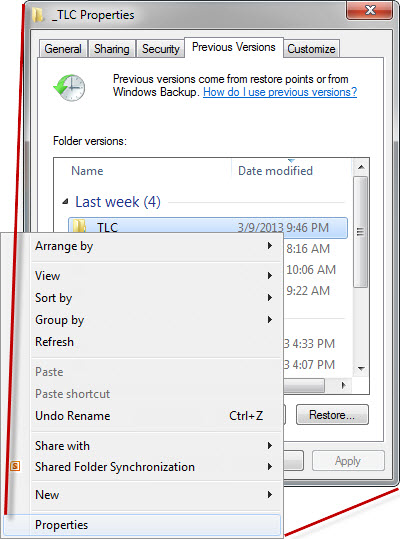
Clicking on the previous versions tab in a folder where you’ve deleted or modified some files will result in some form of the screenshot below, with previous versions of files or folders listed.
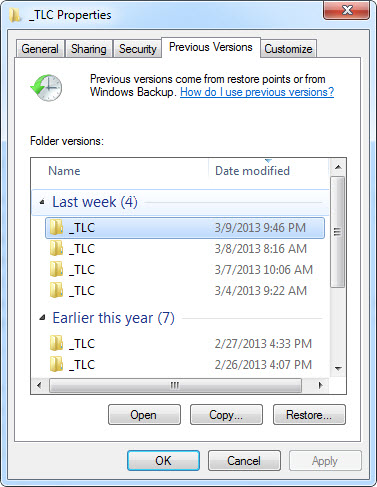
Restoring files is as easy as selecting the folder, and hitting restore.
Alternately, you can open any folder by double clicking, and copy, or even open and edit single files, as opposed to having to restore the whole directory.
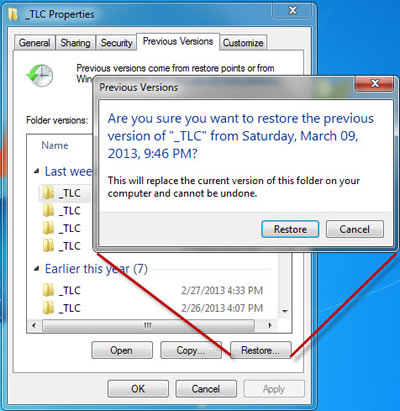
You can open any previous version of a folder or file by double-clicking on it, or selecting the “Open” button.
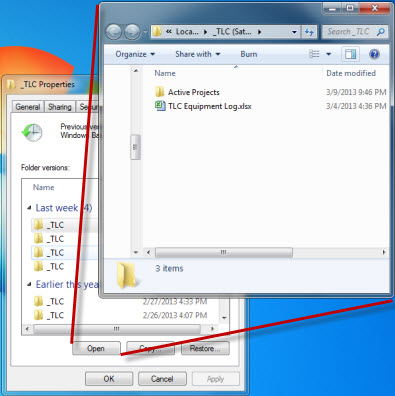
How to setup or confirm System Protection is Enabled
You can ensure Previous Versions is enabled through the “System Protection” window. This can be accessed by right-clicking on “My Computer” and selecting “Properties.” This will bring up the window below, wherein you will see a “System Protection” option on the left-hand pane.
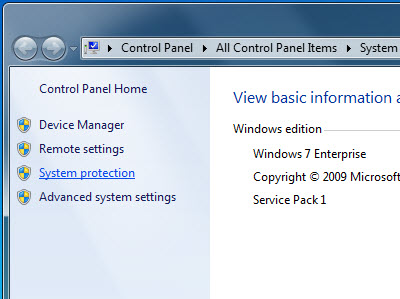
When opening System Protection, you will be met with the window below. Take note of any non-system drives, and enable protection on them if desired. You will not be able to restore previous versions of files on drives that do not have protection enabled. Choose the desired space allotment via the “Configure” button. How many previous versions are available will directly depend on how much space you have allotted.
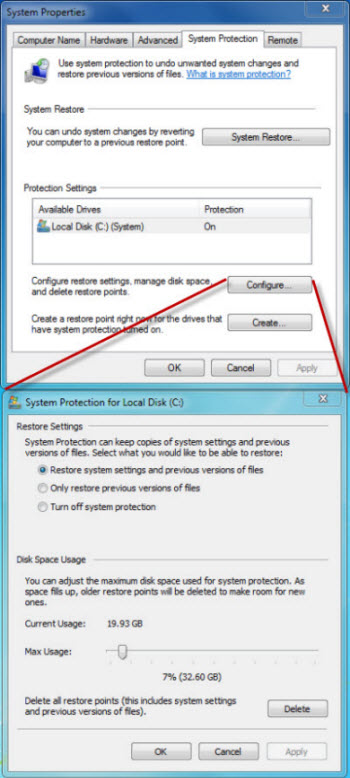
So there you have it, a few clicks and moments of configuration to put weeks or months of automatically generated backups at your fingertips.
– Josh @ TLC
PowerPoint Outline – inside/outside/middle ???
A stroke and an outline are the same thing, but called different things based on the program being used. It is a line around the perimeter. The line can be any color, even a gradient of colors and any width. But PowerPoint has a flaw in its outline/stroke feature:
When you apply strokes to shapes in Illustrator or Photoshop, you have the option to align the stroke to the outside, inside, or center of the shape:
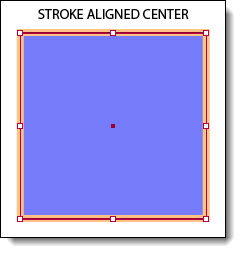
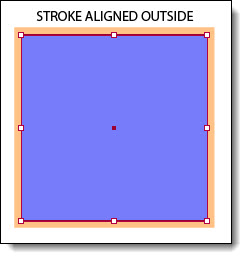
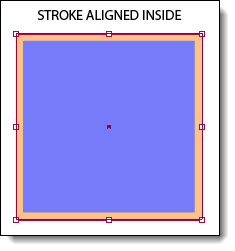
In PowerPoint, the stroke is automatically applied to the center of a PowerPoint, or vector, shape:
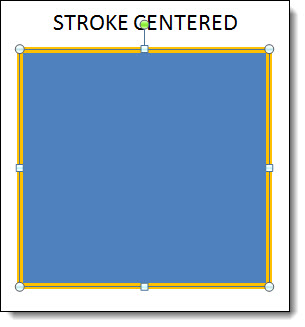
However, with inserted images, the stroke gets applied to the outside:
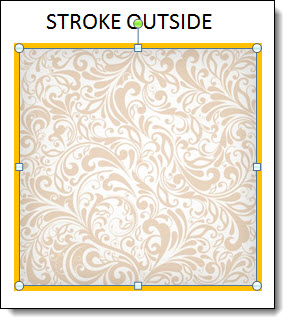
And for text, the stroke is applied to the center:

This makes it difficult if you are trying to align shapes with images, the strokes don’t align even if they are the same weight simply because PPT aligns to the edge of the shape/image and now the same size elements with the same width stroke are different sizes, because on one the stroke makes the shape wider than the other. With the text, the actual text starts to disappear (above example is the base text and then a 10pt stroke applied – which almost completely eliminates the black text). There is not a solution for PowerPoint as of PPT 2013, but we can hope for user control over the placement (inside-outside-center) by the designer to improve PowerPoint.
– Troy @ TLC
Florida in September – Yes!

Fort Lauderdale, Florida in September is perfect! I, and hopefully you, will be there for the 2013 Presentation Summit. I will be hanging out in the Help Center answering PPT questions throughout the event and have 2 presentation sessions.
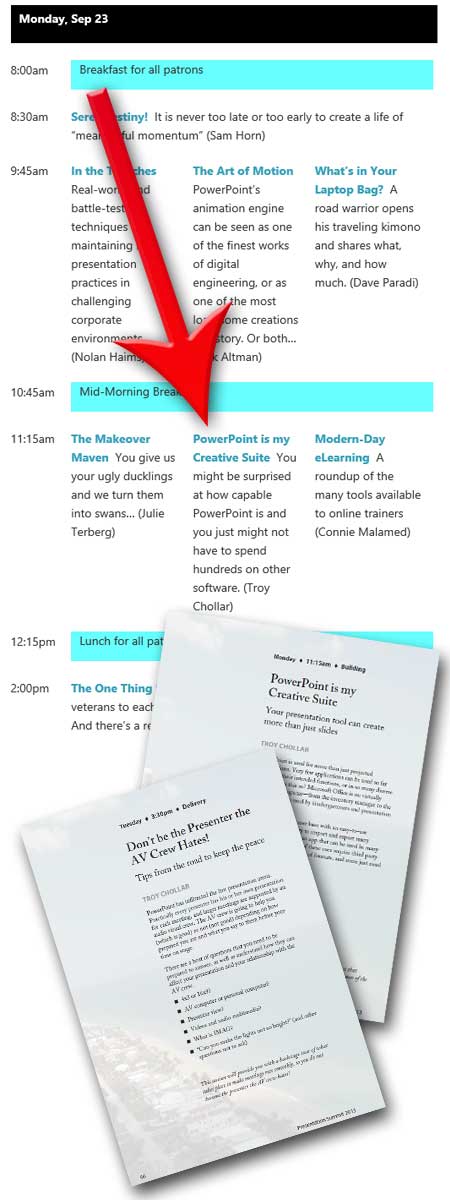
Here is the session schedule, which is packed with great topics by the top people in the presentation industry. My talk titles are:
1. “PowerPoint is my Creative Suite”
2. “Don’t Be the Presenter the AV Crew Hates!”
On the schedule webpage, the talk titles link to a more detailed description of each talk. Hope to meet up with lots of you there!
– Troy @ TLC
SlideDog – Out of Beta Review
Original review is here here.

TLC presentation designer, Amber, has done a follow up testing and review of the SlideDog offering. SlideDog has completed its Beta phase and released its first official version of the program. This version has significant improvements over the beta. I should note, this review is a bit overdue as we started it in January and lost track of it until this month.
Supported file types are PowerPoint (.ppt and .pptx), PDFs, Prezi, Movies (multiple formats), Web Pages (URLs), and images (multiple formats), with more expected.

SlideDog has the ability to seamlessly switch between applications, making it appear that they are all 1 file. You create playlists of different file types, run the show, and SlideDog takes care of the rest.
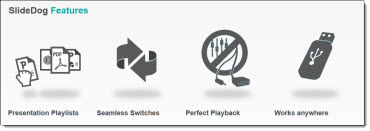
Download and Install is same as before. The setup process searches your system for the applications SlideDog requires to run the different file types. It helpfully provides links to download missing software it needs, which are all free options.
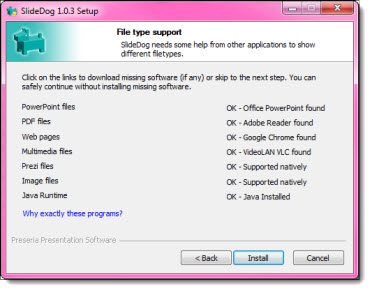
When you’re ready to create a SlideDog presentation, you can either browse for specific files or simply drag and drop into the playlist area (a great use of multi screen computer setups). SlideDog then generates thumbnails of each presentation element to give a preview of the files.
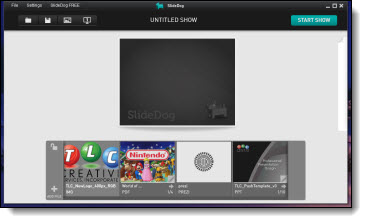
When you run the show, SlideDog preloads all of the files, which makes switching between the applications faster during the show, but you do have a dialog window with a preloading notice during this time. The preloading notice is onscreen depending on the number of files and their size. In our test, it was visible for up to 90 seconds, so this is something to consider when getting ready to present (you do not want the audience waiting and watching this dialog). The end result was a seamless presentation.
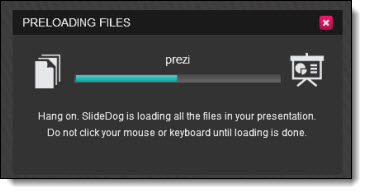
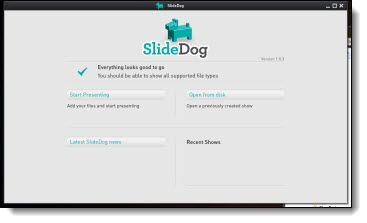
SlideDog now offers different licenses: Free, Pro, and Shared License. Pro offers dual screen mode, unbranded presentations with custom backgrounds and free updates for 1 year. Shared License has all of the Pro features, plus you can use SlideDog in an auditorium or meeting room with multiple users on the same computer. The free version allows you to create playlists and run them seamlessly, but with a SlideDog logo. There is also an option to try Pro for 15 minutes.
Note: The file wrapper error that was present in Beta is now fixed and the dual screen mode will close when SlideDog closes.
We did have a conflict with SlideDog not recognizing PowerPoint 2010. This was caused by having a dual installation of both PowerPoint 2010 and 2003. But it did create an opportunity to contact SlideDog’s support, which was top notch. Dag Hendrik worked with us for a few days to figure out the issues, and then sent patches which fixed them. It was very nice to have the issue resolved so quickly, with great customer service.
Our end result was that SlideDog has made a lot of great progress since the Beta release we reviewed, and we recommend testing it if you have presentations that need to use several different files, file types and even presenters (with the Shared License option).
– Troy @ TLC
